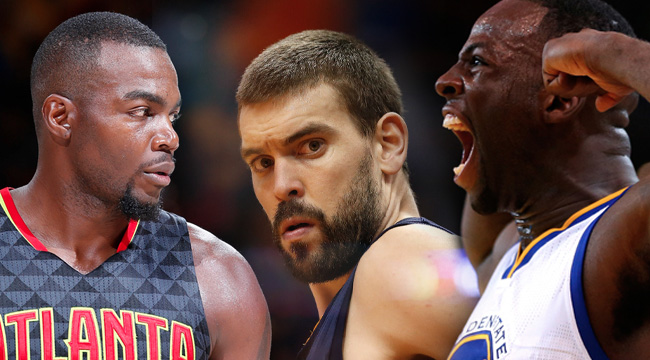
Second-round draft picks are really valuable…or so Sixers fans tell themselves shortly before crying themselves to sleep. In all seriousness, a lot of second rounders don’t pan out, and many never even reach the NBA, but that doesn’t mean a player taken in the second round can’t prove to be a valuable player. Indeed, several of the better players in today’s NBA came off the board after the first 30 picks. With that in mind, let’s look at the best second-round picks of the last 15 years. Two important things to note here: Manu Ginobili is not eligible for the list because he was drafted in 1999, and we’re looking exclusively at 21st-century drafts. Frankly, he would’ve been a super-obvious No. 1, so leaving him off the list makes things a bit more dramatic.
Secondly, I thought about Hassan Whiteside (who was selected 33rd overall by the Kings in 2010) for awhile, but ultimately decided to leave him off because sure, he’s playing well now, but he initially fell out of the league. It’s hard to look at someone as truly being a good pick when they’re playing in China two years after being drafted. Plus, his resume is pretty small at this point, and no one’s totally sure if he’s destined for a lengthy NBA career. Now then, on to the fun!
15. Amir Johnson – 56th overall pick (2005) – Pistons
The tricky thing about Amir is that while he certainly wasn’t bad as a Piston, it feels like he reached his ceiling after being traded to the Raptors. If we’re being honest, we didn’t really start noticing how good he was until 2013-14, when the post-Rudy Gay Raptors began thriving with Johnson as their starting power forward. He’s a low-usage, high-efficiency player with a solid mid-range game (he’s also become an adequate three-point shooter) who knows exactly what his strengths and weaknesses are. Maybe that’s not something to get super-excited about, but getting this kind of value with the 56th pick in the draft is definitely worth celebrating.
14. Danny Green – 46th overall pick (2009) – Cavs
Green doesn’t average a ton of points a game, but what he gives the Spurs is clearly invaluable, as he ranks as one of the best three-and-D guys in the league. Green is as reliable of a three-point shooter as you’ll ever find, and in San Antonio’s brilliant, motion offense, he’s never short on wide-open looks. Green re-signed with the Spurs for a four-year, $44 million deal this summer. He likely could have gotten a lot more, but he recognized the unique opportunity the Spurs give him, and took a hometown discount.
13. Kyle Korver – 51st overall pick 2003) – Nets
It was a telling sign of how the NBA has evolved that not only did Kyle Korver make the All-Star team last season, he was mostly an uncontroversial pick. The league leans more on the 3-ball than at any previous point, and Korver has reaped the benefits. Last season, he shot a stunning 49.2 percent from behind the arc, and it wasn’t even a career best (that would be when he shot 53.6 percent from downtown for the Jazz in 2009-10). Korver is as reliable from three as anyone in the league, and in the modern NBA, that skill has become essential. Aside from Stephen Curry, there isn’t a better catch-and-shoot weapon in the Association than “Threezus” himself.
12. Isaiah Thomas – 60th overall pick (2011) – Kings
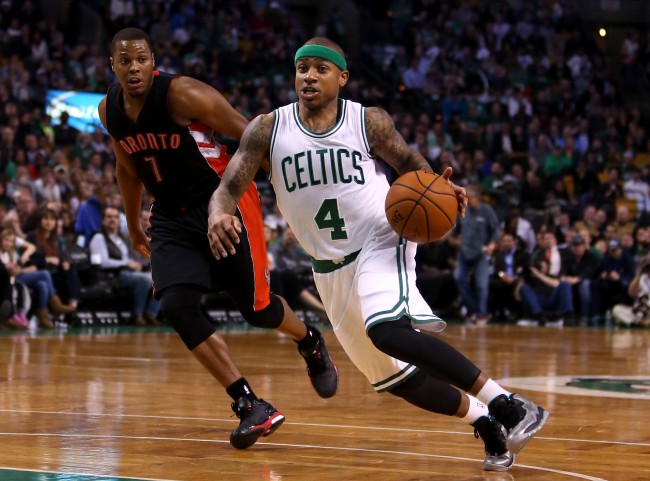
The fact that he was the final pick — Mr. Irrelevant, if you will — definitely factored into his final ranking. IT4 was a great player at Washington, but few expected his skills to translate to the pro game as well as they have. While not the strongest defender, his offensive game is undeniable. He averaged over 20 points in his final season with the Kings two years ago, and has been an incredible source of points since joining the Celtics at the trade deadline last season. Is his game perfect? Hardly. But he’s an elite-level scorer, and the fact that he lasted until the final pick of his draft is stunning in retrospect.
11. Mo Williams – 47th overall pick (2004) – Jazz
Mo Williams is perhaps best known for being the only non-LeBron Cavs player to make an All-Star team during his first tenure with the Cavs. Indeed, his best years in the league came during his 2008-11 stretch with Cleveland, but he’s proven himself to be a reliable point guard for 13 seasons and even holds the Timberwolves franchise record for points in a game after blasting off for 52 to help snap a 15-game losing streak last season. Williams re-joined the Cavs last season, and with Kyrie Irving still injured, he’s done a fine job filling in as the starting point guard so far this season. One can only assume that when Uncle Drew returns, Williams will add considerable potency to the Cavs bench.
10. Chandler Parsons – 38th overall pick (2011) – Rockets
Upon being drafted by the Rockets in 2011, Parsons immediately entered the starting lineup. After a promising rookie campaign, he broke out in his second season, as his three-point shooting fit perfectly into the Rockets high efficient attack predicated on shots at the rim and at the arc. It briefly looked like he could be the final piece of a “big three” with James Harden and Dwight Howard, but it wasn’t meant to be. Mark Cuban swooped in with a four-year, $63 million “poison pill” contract the Rockets chose not to match, likely because they were still hoping to sign Chris Bosh at the time. Parsons’ first year in Dallas was somewhat disappointing due to some nagging injury issues, but he still appears to have a bright future ahead of him and he’s still the feather in the cap of GM Daryl Morey.
9. Trevor Ariza – 43th overall pick (2004) – Knicks
Hey look, a good draft pick by the Knicks in the mid-2000s! It’s a miracle! Ariza just spent two years with the Knicks, however, and he really began demonstrating his value in his fifth year in the league, when he was a key cog on a Lakers team that would win a championship. Ariza is the type of player whose value is most readily evident when he’s on a good team. On mediocre Hornets and Rockets squads, he might not have seemed all that special, but during his 2013-14 campaign with the Wizards, and his return to Houston, he’s been an invaluable asset, providing solid three-point shooting and quality defense.
8. Monta Ellis – 40th overall pick (2005) – Warriors
No, Monta isn’t the most efficient scorer around, but no matter what team he’s on, he’s always found ways to put points on the board. In his second season, he broke out, averaging over 16 per game, while playing a key role on the “We Believe” Warriors Don Nelson led over the No. 1 seed Mavs in 2007. As time went on, he no longer fit within the Dubs system, and he was traded to the Bucks, clearing the way for the Splash Bros. He revived his career with the Mavericks, thriving in Rick Carlisle’s fast-paced system, specifically in a devastating pick-and-roll with Dirk Nowitzki. (Although, Monta’s efficacy became less sure when Rajon Rondo showed up.) Ellis’s imperfections are well-known, but he’s a relentless attacker on offense, and he has shown his teaming with Paul George could be just what the Pacers need to return to the playoffs this season.
7. Goran Dragic – 45th overall pick (2008) – Spurs
Afer being drafted by the Spurs and subsequently traded to the Suns, Dragic spent the early portion of his career learning under Steve Nash, and thriving as a high-energy backup point guard. It wasn’t until his second stint with the Suns, however, that he was really given the chance to the shine. In 2013-14, Dragic broke out, averaging 20.3 points per game, and making the All-NBA Third Team. Unfortunately, while Dragic thrived in Phoenix, he also became dissatisfied at the preponderance of point guards on the roster. Forced to share time with Isaiah Thomas and Eric Bledsoe, Dragic became irked, and demanded a trade. He would end up in Miami, answering the prayers of a team who had long searched for an All-Star caliber point guard. Dragic signed with the Heat this summer, and appears to be a big part of their long-term plans.
6. Michael Redd – 43rd overall pick (2000) – Bucks
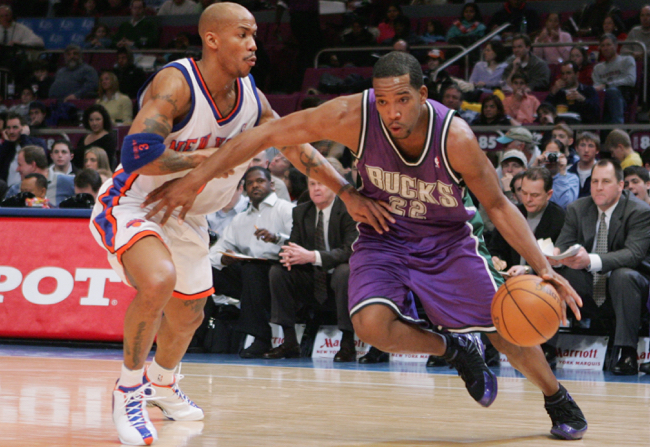
In what might be the worst draft in NBA history, the Bucks were able to snag an All-Star midway through the second round. Redd’s career ended sooner than we might have hoped, as he played just 12 years in the league, but in his prime, he was an incredible scorer, once averaging over 22 points a game during four consecutive seasons while getting named to the All-Star team and All-NBA Third team in 2004. In 2008, he helped USA Basketball win the gold medal in Beijing. In the mid-2000s, he was the cornerstone of the Bucks franchise. Had he not had so many injury problems that cut his career short, he might gotten even higher on this list.
5. Carlos Boozer – 35th overall pick (2002) – Cavaliers
Never forget: there was a time when Carlos Boozer was really good. His last few years of terrible defense might not leave us with the best impression of him, but the fact is, he was one of the best power forwards in the game for much of the 2000s. He made the All-Star team in 2007 and 2008 and was named All-NBA third team in 2008. As a member of the Utah Jazz, he and Deron Williams lead the 2006-07 squad to the Western Conference Finals. Even his time in Chicago was better than you might remember. Teamed with then-MVP Derrick Rose in his first two seasons, he helped the team grab the No. 1 seed in the Eastern Conference. Finally, we’ll always have “GET IT, JO!”
4. DeAndre Jordan – 35th overall pick (2008) – Clippers
The only second-round pick that Blake Griffin ever barricaded a door over. DJ has become one of the game’s best defensive players, and while his offensive range is quite limited, his thunderous dunks have tormented poor souls like Brandon Knight and Marco Belinelli. What really makes the Clippers selection of DJ stand out is that during his time at Texas A&M, there was little about his performance that suggested he would be a great NBA player. Rather, the Clippers took a chance on an exceptional athlete and were rewarded with an excellent player who is an essential part of the team’s current core. Look no further than this summer’s free agency fiasco, if you want proof.
3. Paul Millsap – 47th overall pick (2006) Jazz
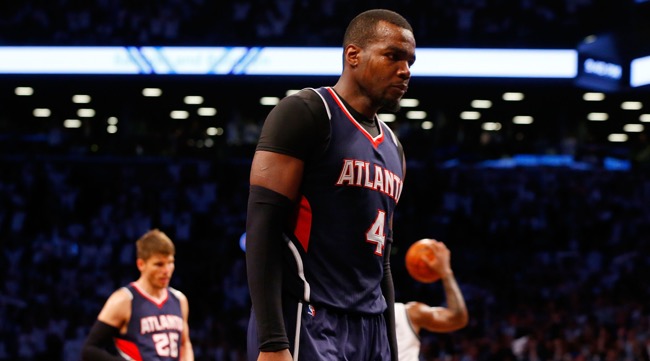
Millsap was an unsung-but-important contributor to the Utah Jazz for seven seasons, but it was when he signed with the Hawks that he truly broke out, and started getting some much-deserved respect. Millsap has made All-Star team in each of his two seasons in Atlanta, and was an important part of last year’s 60-win juggernaut. One way his game has improved since his arrival in Atlanta is the addition of three-point range, which has allowed the Hawks to stretch the floor, playing into Mike Budenholzer’s “Spurs of the East” aesthetic. He still brings excellent offensive eclecticism with solid defense, but it’s his ability as a stretch four, that makes him perfect for Coach Bud’s space-the-floor attack in the half court.
2. Draymond Green – 35th overall pick (2012) – Warriors
Every year, it becomes a bit more mind-boggling that Green managed to slip as far as he did. Sure, his offensive game wasn’t the most thrilling, but he was already known for his defensive prowess, which has only accelerated during his time with the Warriors. A 4-year senior, Green may have been viewed as not having a ton of upside, but that has been proven highly false, as he’s gotten better every year he’s been in the league. In his third season, he replaced David Lee in the starting lineup, which was the final tweek as the Dubs evolved into the world obliterators they are today. They’re defense is as much a part of their brilliance as their offense, and Draymond is quite possibly the biggest part of that equation. And it’s not just his defense that’s turn them into the creme at the top of the NBA.
He re-signed in the Bay this season for five years and $90 million, and he would appear to be worth every penny.
1. Marc Gasol – 48th overall pick (2007) – Lakers
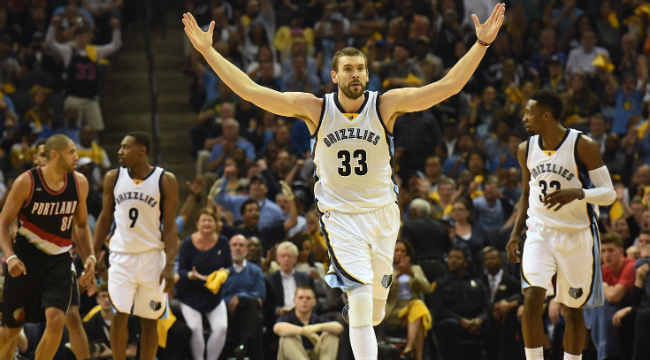
Considering Gasol made the All-Star team in 2012, was an All-Star starter last season, won the Defensive Player of the Year award in 2013 and is quite possibly the best center in the NBA today, this was an obvious pick for No. 1. After being selected by the Lakers in 2007, Gasol was traded to the Grizzlies in a move that sent his brother to L.A. The trade seemed one-sided at the time, but would ultimately prove to be mutually beneficial. Pau became an essential part of a Lakers core that won two titles (playing Robin to Kobe’s Batman), while Marc became the anchor of a Grizzlies team that has made five consecutive playoff appearances, including a Conference Finals berth three years ago, and a first-round upset of the Spurs five years ago. Marc’s stifling defense and strong mid-range game have made him invaluable. It’s also hard to calculate all the little things Marc does to help the Grizzlies win.
After signing a maximum allowable five-year, $110 million contract this summer, he should be part of the Grizzlies plans for a long time to come.






